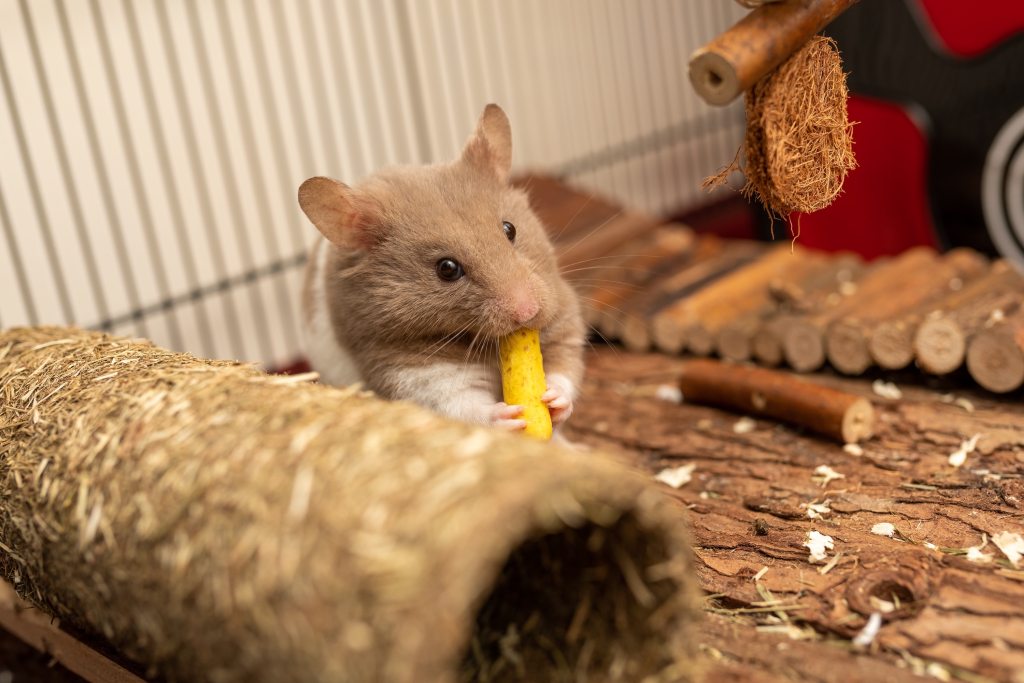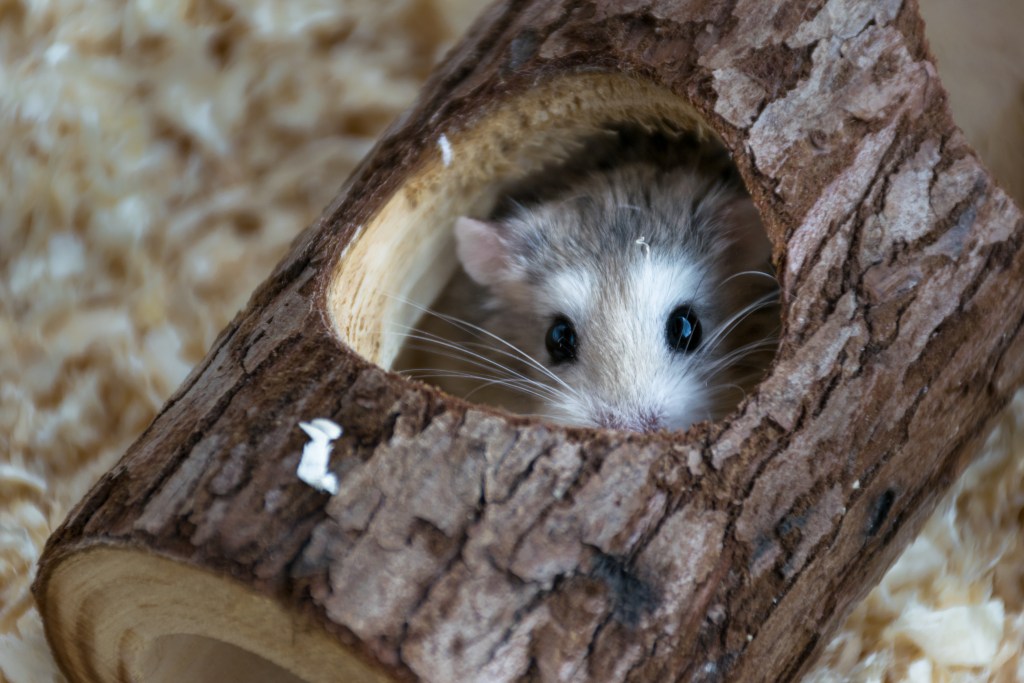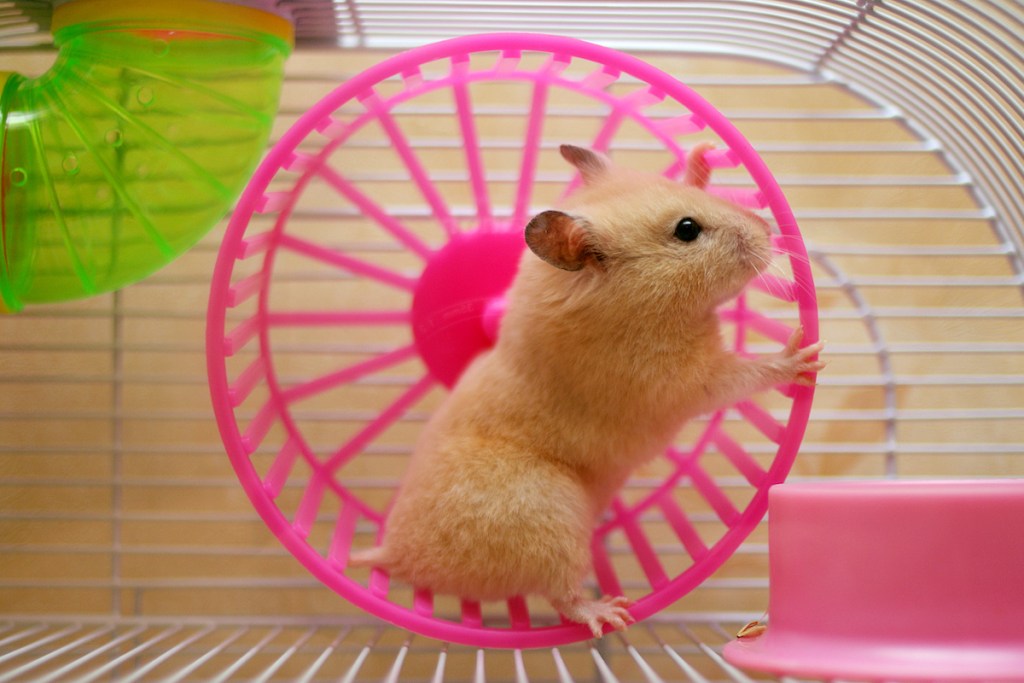If there’s one thing we know about hamsters, it’s that they love toys. And nothing is cuter than watching our little rodents rolling around in a ball or getting their steps in while working out on the hamster wheel. Your pet will have the most fun if you mix up the playtime routine now and then, so he isn’t using the same hamster toys every day. So, how do you choose which objects to bring home and what to leave off the list? We’ll walk you through the must-haves for your favorite small pet.
The right toy depends on the type of hamster
Each kind of hamster will gravitate toward a slightly different option. Syrian hamsters are the biggest and most common species of this pet. They really need time out of the cage and extensive exercise. You’ll see your Syrian wandering about in his home late at night, especially if he doesn’t get enough playtime. Dwarf hamsters have a little less energy to go with their much smaller stature, but that doesn’t mean they don’t want to engage with you. Adjust the number and size of your new toys as needed based on which species you have.

Toys are not just for exercise
All rodents love to chew, and they need to keep those pearly whites sharp for eating seeds and nuts. At your house, your pet probably doesn’t do much foraging or cracking through his food, which means you should engage him in other ways. Chew toys come in all varieties — edible ones, flavored ones, cloth ones, wooden ones, you name it. Each has different benefits, and you’ll want to invest in a few different styles for different goals. If you want to give him a little snack, for example, you’ll look at a chewy treat to munch on. But if your ham’s engaging in cage chewing, go all-in on a full hamster chew set.
You need to be really careful about hamster balls
We can all picture the iconic spirited pet rolling around the house like he owns it, but do your research before bringing home a hamster ball. Never leave a pet alone outside his cage, especially inside a toy or even in a playpen. You also need to ensure you’re getting a big enough ball so that he’s not scrunched in there while trying to move (this one will work better for larger animals). And do consider that playpen instead, especially if he doesn’t seem too keen on the rolling ball after giving it a shot.

He’ll love a decked-out cage, no matter what
The more tubes, the better, says every hamster. You can take great enjoyment in building, and rebuilding, his tunnels in every configuration imaginable (extra points if your setup goes viral). This will also give your small pet some freedom while keeping him protected from the larger beasts if you have any. Make things interesting by changing it up frequently so there’s always something new for him to explore. And don’t just stick with the basic plastic tubes. Add in stairs and ladders of your choosing. Start small and see what he likes before building out the rest of the design.

Every pet is different and wants different things
No matter what, you’ll adjust to your specific critter and adapt as you go. Perhaps you find that you’ve brought home an explorer who needs new places to check out every day. Or maybe you have a jogger who runs the wheel all night long. Whatever his fancy, you can update your toys based on his unique needs and personality. Just make sure you have the basics covered — toys aren’t just fun, they’re also healthy.
So, which toys should you buy? Truthfully, the answer is all of them. You want a few for mental stimulation, some for chewing, one for exercise, and whatever else he seems attracted to. It may seem overwhelming at first, but you’ll notice quickly which excite him and which get buried in the wood chips. Because hamsters are mostly solitary and many are nocturnal, they won’t always have a living being around to entertain them, so including toys in your habitat is essential for keeping your pets happy. Plus, it’s really adorable to watch.
Editors' Recommendations
- A simple guide to what to feed tadpoles in your aquarium
- Is my rabbit pregnant? 5 telltale signs you should know
- What fish can live with bettas? These are your best bets for fish buddies
- What you need to know about sugar gliders before you get an exotic pet
- 3 reasons not to give pet rabbits, baby chicks, or ducks this Easter




